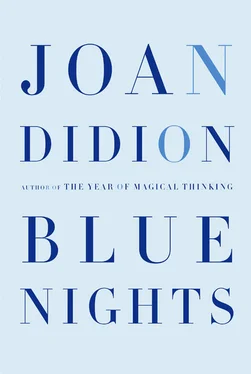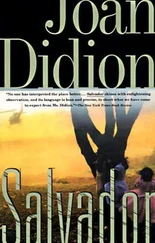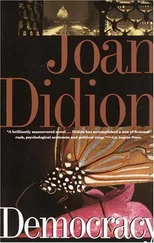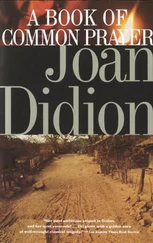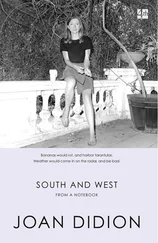She was born in the first hour of the third day of March, 1966, at St. John’s Hospital in Santa Monica. We were told that we could adopt her late the afternoon of the same day, March third, when Blake Watson, the obstetrician who delivered her, called the house at Portuguese Bend in which we then lived, forty-some miles down the coast from Santa Monica. I was taking a shower and burst into tears when John came into the bathroom to report what Blake Watson had said. “I have a beautiful baby girl at St. John’s,” is what he had said. “I need to know if you want her.” The baby’s mother, he had said, was from Tucson. She had been staying with relatives in California for the birth of the baby. An hour later we stood outside the window of the nursery at St. John’s looking at an infant with fierce dark hair and rosebud features. The beads on her wrist spelled out not her name but “N.I.,” for “No Information,” which was the hospital’s response to any questions that might be asked about a baby being placed for adoption. One of the nurses had tied a pink ribbon in the fierce dark hair. “Not that baby,” John would repeat to her again and again in the years that followed, reenacting the nursery scene, the recommended “choice” narrative, the moment when, of all the babies in the nursery, we picked her. “Not that baby … that baby. The baby with the ribbon.”
“Do that baby ,” she would repeat in return, a gift to us, an endorsement of our wisdom in opting to follow the recommended choice narrative. The choice narrative is no longer universally favored by professionals of child care, but it was in 1966. “Do it again. Do the baby with the ribbon.”
And later: “Do the part about Dr. Watson calling.” Blake Watson was already a folk figure in this recital.
And then: “Tell the part about the shower.”
Even the shower had become part of the recommended choice narrative.
March 3, 1966.
After we left St. John’s that night we stopped in Beverly Hills to tell John’s brother Nick and his wife, Lenny. Lenny offered to meet me at Saks in the morning to buy a layette. She was taking ice from a crystal bucket, making celebratory drinks. Making celebratory drinks was what we did in our family to mark any unusual, or for that matter any usual, occasion. In retrospect we all drank more than we needed to drink but this did not occur to any of us in 1966. Only when I read my early fiction, in which someone was always downstairs making a drink and singing “Big Noise blew in from Winnetka,” did I realize how much we all drank and how little thought we gave to it. Lenny added more ice to my glass and took the crystal bucket to the kitchen for a refill. “Saks because if you spend eighty dollars they throw in the bassinette,” she added as she went.
I took the glass and put it down.
I had not considered the need for a bassinette.
I had not considered the need for a layette.
The baby with the fierce dark hair stayed that night and the next two in the nursery at St. John’s and at some point during each of those nights I woke in the house at Portuguese Bend to the same chill, hearing the surf break on the rocks below, dreaming that I had forgotten her, left her asleep in a drawer, gone into town for dinner or a movie and made no provision for the infant who could even then be waking alone and hungry in the drawer in Portuguese Bend.
Dreaming in other words that I had failed.
Been given a baby and failed to keep her safe.
When we think about adopting a child, or for that matter about having a child at all, we stress the “blessing” aspect.
We omit the instant of the sudden chill, the “what-if,” the free fall into certain failure.
What if I fail to take care of this baby?
What if this baby fails to thrive, what if this baby fails to love me?
And worse yet, worse by far, so much worse as to be unthinkable, except I did think it, everyone who has ever waited to bring a baby home thinks it: what if I fail to love this baby?
March 3, 1966.
Until that instant when Lenny mentioned the bassinette it had all happened very fast. Until the bassinette it had all seemed casual, even blithe, not different in spirit from the Jax jerseys and printed cotton Lilly Pulitzer shifts we were all wearing that year: on New Year’s weekend 1966 John and I had gone to Cat Harbor, on the far side of Catalina Island, on Morty Hall’s boat. Morty Hall was married to Diana Lynn. Diana was a close friend of Lenny’s. At some point on the boat that weekend (presumably at a point, given the drift of the excursion, when we were having or thinking about having or making or thinking about making a drink) I had mentioned to Diana that I was trying to have a baby. Diana had said I should talk to Blake Watson. Blake Watson had delivered her and Morty’s four children. Blake Watson had also delivered the adopted daughter of Howard and Lou Erskine, old friends of Nick and Lenny’s (Howard had gone to Williams with Nick) who happened to be on the boat that weekend. Maybe because the Erskines were there or maybe because I had mentioned wanting a baby or maybe because we had all had the drink we were thinking about having, the topic of adoption had entered the ether. Diana herself, it seemed, had been adopted, but this information had been withheld from her until she was twenty-one and it had become necessary for some financial reason that she know. Her adoptive parents had handled the situation by revealing the secret to (this had not seemed unusual at the time) Diana’s agent. Diana’s agent had handled the situation by taking Diana to lunch at (nor at the time had this) the Beverly Hills Hotel. Diana got the news in the Polo Lounge. She could remember fleeing into the bougainvillea around the bungalows, screaming.
That was all.
Yet the next week I was meeting Blake Watson.
When he called us from the hospital and asked if we wanted the beautiful baby girl there had been no hesitation: we wanted her. When they asked us at the hospital what we would call the beautiful baby girl there had been no hesitation: we would call her Quintana Roo. We had seen the name on a map when we were in Mexico a few months before and promised each other that if ever we had a daughter (dreamy speculation, no daughter had been in the offing) Quintana Roo would be her name. The place on the map called Quintana Roo was still not yet a state but a territory.
The place on the map called Quintana Roo was still frequented mainly by archaeologists, herpetologists, and bandits. The institution that became spring break in Cancún did not yet exist. There were no bargain flights. There was no Club Med.
The place on the map called Quintana Roo was still terra incognita.
As was the infant in the nursery at St. John’s.
L’adoptada , she came to be called in the household. The adopted one.
M’ija she was also called. My daughter.
Adoption, I was to learn although not immediately, is hard to get right.
As a concept, even what was then its most widely approved narrative carried bad news: if someone “chose” you, what does that tell you?
Doesn’t it tell you that you were available to be “chosen”?
Doesn’t it tell you, in the end, that there are only two people in the world?
The one who “chose” you?
And the other who didn’t?
Are we beginning to see how the word “abandonment” might enter the picture? Might we not make efforts to avoid such abandonment? Might not such efforts be characterized as “frantic”? Do we want to ask ourselves what follows? Do we need to ask ourselves what words come next to mind? Isn’t one of those words “fear”? Isn’t another of those words “anxiety”?
Читать дальше
Конец ознакомительного отрывка
Купить книгу
